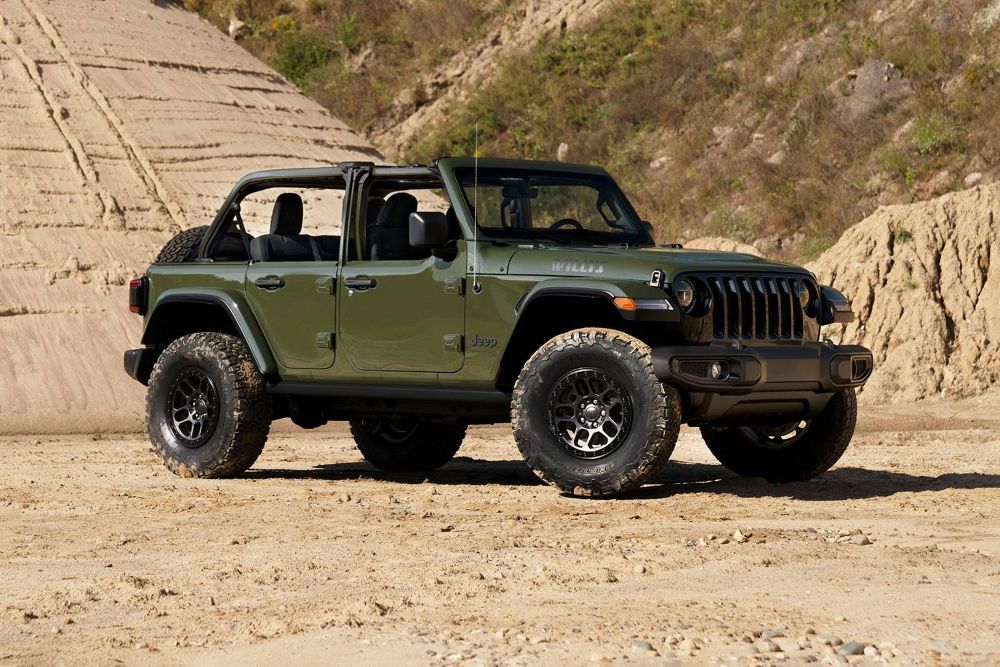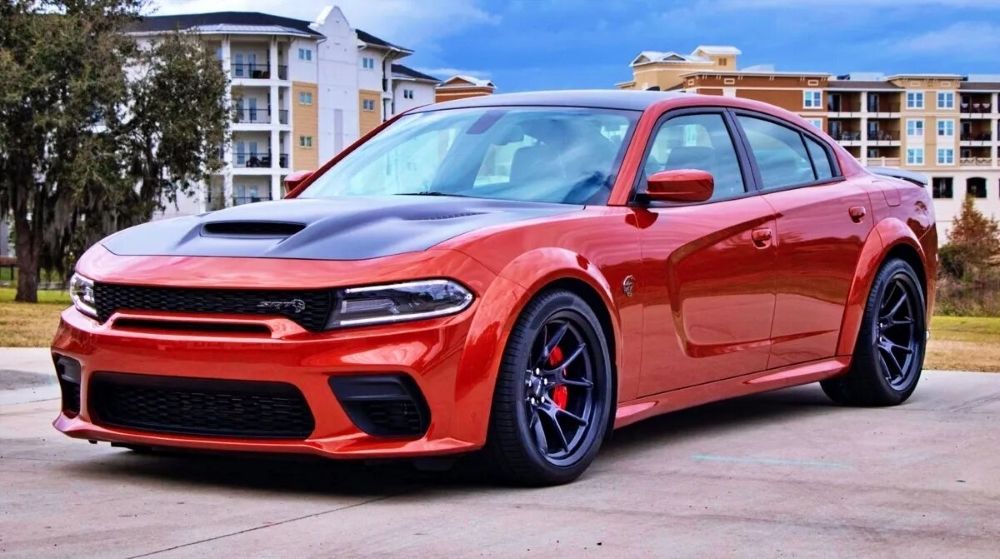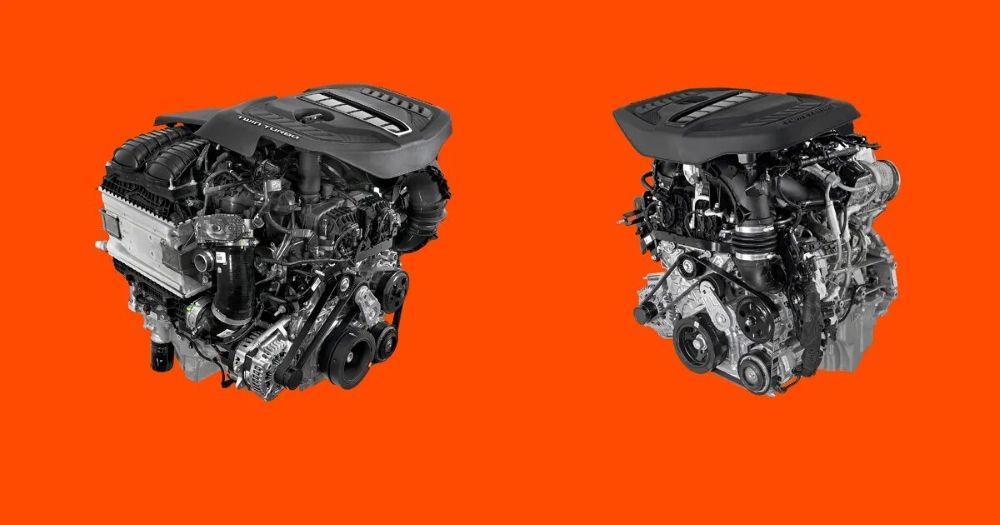You may have heard quite an earful about what a Hurricane engine is about. The first to bear that name would be the Jeep CJ-equipped Willys F4-34 inline-4 piston engine. From 1945 to 1986, Jeep produced a range and series of small, open-body non-military offroaders and compact pickup trucks which include the CJ-3B, CJ-5, and CJ-6 – all powered by the F4-134 Hurricane engine.
At that time, Hurricane was a post-WWII replacement engine model for the MB Jeep-equipped Willys L134 (Go Devil) inline-4 engine. Go-Devil was later used in several non-military Jeep vehicles. So, the name “Hurricane” is a historic one with roots in the Jeep brand that’s currently part of the multinational automotive manufacturing corporation Stellantis, although Mitsubishi also built the engine to power its license-built Jeep back then.
Stellantis was formed in 2021 from the Italian-American Fiat Chrysler Automobiles and the French Peugeot S.A. merger. Currently, the Hurricane engine is a new twin-turbocharged mill by Stellantis, which the corporation claims is 15{09e594db938380acbda72fd0ffbcd1ef1c99380160786adb3aba3c50c4545157} more efficient. The new “clean sheet” engine comes in two variants classified as Standard Output (SO) and High-Output (HO). They were unveiled in March 2022, with Stellantis saying the engine will find its way into the Dodge and other Stellantis brands.
Cars That Will Get The New Stellantis Inline-Six Hurricane Engine
We expect to start seeing the new Stellantis twin-turbocharged 3.0L inline-six Hurricane engine in the guts of Stellantis brands, especially the Jeep Wrangler and the Dodge Charger from the 2023 model year onward. We also expect to see it in the next Jeeps Gladiator, Wagoneer, and Cherokee; the Dodge Ram 1500, 2500, and Challenger.
As stated earlier, the engine comes in two variants and should fit in any vehicle model currently powered by a longitudinal engine. Stellantis has already begun producing the Hurricane at its Mexico engine plant in Saltillo South. Environmental purists might not be so elated, but the petrolhead in us think it’s refreshing to talk about an all-new engineering marvel in the form of a clean-sheet ICE at a time like this when all that’s being talked about are electric motors and how advanced they can get.
It’s almost an aberration for Stellantis to be talking about the enduring need for gas-powered mills in the future, when other automakers have both eyeballs set on making the magic date, which is to go fully electric by 2030. This development is even more significant considering the sheer size of Stellantis and the number of vehicle models in its portfolio. In terms of global vehicle sales in 2021, Stellantis was the world’s fourth-largest automaker behind Toyota, Volkswagen, and General Motors, boasting annual sales of approximately eight million vehicles.
Of course, this does not imply the corporation hopes to resist the electrified motoring future. Stellantis already announced the corporation’s goal of being 50 percent electrified in North America by that magic date.
From what we’ve seen so far, the new twin-overhead-cam direct-injected inline-6 Hurricane will have bore and stroke measurements of 84.0 millimeters and 90.0 millimeters. Both ends of the cylinder are aluminum, while the cylinders are spray bored using a plasma transfer wire arc process that adds a thin iron coating to the cylinder walls. Stellantis explained that this is a lightweight design approach in place of the conventional iron sleeve, saving 3 lb in weight.
The 84.0 mm bore and 90.0 mm stroke measurements correspond to that of BMW’s S58 3.0L straight-six mill powering the Bimmer’s M nameplate. Both engines are turbo fed by three cylinders, which reduces turbo lag. The Standard Output Hurricane should produce an excess of 400 horsepower and 450 lb-ft of torque, although the final output ultimately depends on the vehicle model equipped with the engine.
It has a 10.4:1 compression ratio, with the intake charge pressurized by the twin turbos with up to 22.4 pounds of boost before being chilled by a water-to-air intercooler. It is also rated up to 5,800 rpm and operates on 87 octanes.
The performance-oriented High-Output Hurricane, on the other hand, should deliver an excess of 500 horses and 475 lb-ft of torque, placing it in the same jar as the Bimmer’s most powerful inline-6. The compression ratio is lowered to 9.5:1 to contain the 26.0 psi delivered from the larger turbos through a dual-inlet intake.
If you ask us, we’d bet the new straight-six Hurricane will replace the V8 series and the acclaimed Pentastar 3.6-liter V-6. Stellantis wouldn’t confirm nor deny this. So, fingers crossed for now.
Everything Else You Need To Know About The New Stellantis 3.0L Inline-Six Hurricane
Over the last couple of years, automobile manufacturers around the world have been cutting back their investment in ICE technology, choosing instead to channel their dollars and human capital into the next big thing in automotive powertrain – electric propulsion. The U.S. remains the global benchmark for emissions regulations, but an increasing number of countries are drafting more stringent emissions laws.
That’s the state of the world in 2022 when Stellantis announced on March 25 that it is making a brand new twin-turbocharged inline-six engine powerful enough to be named Hurricane, with the design architecture optimized for efficiency. This should spell the beginning of the end for the larger-displacement, poorer-economy Hemi V8 mills currently powering the Jeep and Dodge models.
The Hurricane thus represents a step towards the corporation’s commitment to a 50-percent battery electric vehicle sales mix by the end of the decade. Ultimately, Stellantis, which is a multinational organization, has no choice but to ease up gently from the powerful gas-powered mills propelling its beloved range of American brands.
Developed new from the ground up to maximize the propulsion needs of the current dispensation, the all-new Hurricane will offer a V8 performance level at a 2-cylinder bargain. Both the SO and HO engine variants share common parts, including the block, exhaust camshaft, and spark plugs, although each unit features many unique parts to maximize each variant’s capabilities.
For example, the performance-oriented HO variant comes with a unique head, crankshaft, larger water-to-air intercooler, and forged aluminum pistons in place of the SO’s cast parts. Thus, the HO offers a slightly higher rev (up to 6,100 rpm), although 91 octane is required.



